Land Rover LR2 Review
In 2001, Land Rover parachuted their not-so-cute ute across the pond. The Freelander landed with a splat. Gas was cheap and XXL SUV's dominated the landscape. What's more (or less), the 174 horse Freelander was technologically quaint, reliability challenged and forgot to show up for its federal crash test. And so Land Rover has redeployed the second-generation Freelander, the forgettably-named LR2, into the American market. This time, sales of big SUVs are in the toilet, there's a burgeoning compact SUV market and Land Rover's traditional entryway, the LR3 (nee Discovery), now costs a lofty $45k+.
To lure entry level prestige SUV buyers, Landy's pen people have conjured-up a Range Rover mini me. While the LR2's exterior continues the brand's venerable it's-hip-to-be- square clamshell bonnet brief, the LR2's designers finessed corners and smoothed edges to create a rugged yet svelte look. Chunky details abound: big wheel arches, solid headlamps and those gills. And its balanced proportions avoid the on stilts persona that blights so many of today's small SUV's (e.g. Acura's RDX). The LR2 could well be the best looking SUV on the road today.
The LR2's light and airy cabin adheres to and extends the Land Rover brand's luxury-in-the-wilderness design theme. Yes, its plasticky leather seats are up market simulacra, and the fit and finish is distinctly so-so. But the LR2's interior successfully straddles the line between mountain and mall. For example, the monolithic center stack provides all the off-road functionality Landy owners will never use, complete with a “set it and forget it” terrain selector and no-brainer bread crumb sat navery. It's festooned with enough e-gizmos– activated by grippy knobs and big ass buttons– to ford streams, descend slopes and withstand the endless rigors of parking lot traffic jams.
Although the LR2 is a utility player, M, L, and XL friends consigned to the [second row] bench will not be well pleased. Unless you fold the seats forward, the LR2’s cargo hole won’t stow enough gear for a softball team, never mind a Saharan sojourn. And the reasoning behind the LR2’s gimmicktastic insert-the-fob start-stop button is lost in the mists of BMW. The sooner it’s banished to the land of Altezza lights and chrome gas caps, the better.
The LR2's 3.2-liter inline six is good for 230 horses. On paper, that's not a lot of power for a vehicle weighing two-and-a-quarter tons. But the I6 generates plenty of low down grunt (234 ft.-lbs. of torque @ 3,200 rpm), the six speed autobox is a seamless cog swapper and the engine is as smooth as the Queen's ermine robes. The LR2 builds power with such seductive ease that you don't mind hanging around waiting for 60mph to arrive (from rest, nine seconds).
Even on optional 18 inchers, the LR2's fully independent suspension dismisses impacts from nasty pavement and giant boulders potholes. If you can cope with body roll, the LR2 will maintain reasonably tenacious grip during brisk cornering. Just as the interior’s splashed with Eau de Landy, the driving experience melds the best of the car and truck worlds. The LR2 is as easy to maneuver as a car, but still gives the driver truck-like heft and solidity. Even better, the LR2 helmsmanship imparts a premium feel, delivering the same laissez faire feel found in the rest of Rover's lineup.
The LR2 caters to more adventurous drivers with the aforementioned four-position Terrain Response™ doo-hickey, which works with various electronic controls– including a modified version of Volvo’s Haldex all-wheel drive system and Gradient Release Control (which helps the vehicle descend steep hills without driver skill/intervention). Still, determined off-roaders will cross this one off their list; the LR2 is shod with city slicks (235/60VR18 all-season tires) and doesn't have any low range gears.
Environmentally sensitive and fuel conscious buyers will also give the LR2 a pass. Like all its stable mates, the LR2 guzzles petrol punch; its official gas mileage is an egregious 16mpg in the city and 23mpg on the highway. That's slightly better than the big bro LR3's equally astounding (and not in a good way) fuel economy. But the LR3 can [almost] justify its prodigious thirst with its no-trails-barred off-road prowess. (Americans miss out on the diesel option that twists up tons of torque and gets 30+ mpg.) Reliability-oriented buyers will clock Land Rover's well-earned reputation for mechanical malfeasance and pull back their ten foot poles in horror.
Land Rover may be hemorrhaging Ford’s money (for now), but it does channel traditional British automotive spirit. The LR2 is not particularly fast, uses too much gas, cramps passengers and can’t match a Jeep Wrangler Unlimited off-road. Land Rover reliability may have improved in recent years, but it’s gone from “worst by a mile” to “worst.” The LR2 will be utterly crushed in sales by Asian, German, and even American competition. And yet it’s an utterly charming machine: a genuine Land Rover.
Latest Car Reviews
Read moreLatest Product Reviews
Read moreRecent Comments
- Jalop1991 In a manner similar to PHEV being the correct answer, I declare RPVs to be the correct answer here.We're doing it with certain aircraft; why not with cars on the ground, using hardware and tools like Telsa's "FSD" or GM's "SuperCruise" as the base?Take the local Uber driver out of the car, and put him in a professional centralized environment from where he drives me around. The system and the individual car can have awareness as well as gates, but he's responsible for the driving.Put the tech into my car, and let me buy it as needed. I need someone else to drive me home; hit the button and voila, I've hired a driver for the moment. I don't want to drive 11 hours to my vacation spot; hire the remote pilot for that. When I get there, I have my car and he's still at his normal location, piloting cars for other people.The system would allow for driver rest period, like what's required for truckers, so I might end up with multiple people driving me to the coast. I don't care. And they don't have to be physically with me, therefore they can be way cheaper.Charge taxi-type per-mile rates. For long drives, offer per-trip rates. Offer subscriptions, including miles/hours. Whatever.(And for grins, dress the remote pilots all as Johnnie.)Start this out with big rigs. Take the trucker away from the long haul driving, and let him be there for emergencies and the short haul parts of the trip.And in a manner similar to PHEVs being discredited, I fully expect to be razzed for this brilliant idea (not unlike how Alan Kay wasn't recognized until many many years later for his Dynabook vision).
- B-BodyBuick84 Not afraid of AV's as I highly doubt they will ever be %100 viable for our roads. Stop-and-go downtown city or rush hour highway traffic? I can see that, but otherwise there's simply too many variables. Bad weather conditions, faded road lines or markings, reflective surfaces with glare, etc. There's also the issue of cultural norms. About a decade ago there was actually an online test called 'The Morality Machine' one could do online where you were in control of an AV and choose what action to take when a crash was inevitable. I think something like 2.5 million people across the world participated? For example, do you hit and most likely kill the elderly couple strolling across the crosswalk or crash the vehicle into a cement barrier and almost certainly cause the death of the vehicle occupants? What if it's a parent and child? In N. America 98% of people choose to hit the elderly couple and save themselves while in Asia, the exact opposite happened where 98% choose to hit the parent and child. Why? Cultural differences. Asia puts a lot of emphasis on respecting their elderly while N. America has a culture of 'save/ protect the children'. Are these AV's going to respect that culture? Is a VW Jetta or Buick Envision AV going to have different programming depending on whether it's sold in Canada or Taiwan? how's that going to effect legislation and legal battles when a crash inevitibly does happen? These are the true barriers to mass AV adoption, and in the 10 years since that test came out, there has been zero answers or progress on this matter. So no, I'm not afraid of AV's simply because with the exception of a few specific situations, most avenues are going to prove to be a dead-end for automakers.
- Mike Bradley Autonomous cars were developed in Silicon Valley. For new products there, the standard business plan is to put a barely-functioning product on the market right away and wait for the early-adopter customers to find the flaws. That's exactly what's happened. Detroit's plan is pretty much the opposite, but Detroit isn't developing this product. That's why dealers, for instance, haven't been trained in the cars.
- Dartman https://apnews.com/article/artificial-intelligence-fighter-jets-air-force-6a1100c96a73ca9b7f41cbd6a2753fdaAutonomous/Ai is here now. The question is implementation and acceptance.
- FreedMike If Dodge were smart - and I don't think they are - they'd spend their money refreshing and reworking the Durango (which I think is entering model year 3,221), versus going down the same "stuff 'em full of motor and give 'em cool new paint options" path. That's the approach they used with the Charger and Challenger, and both those models are dead. The Durango is still a strong product in a strong market; why not keep it fresher?



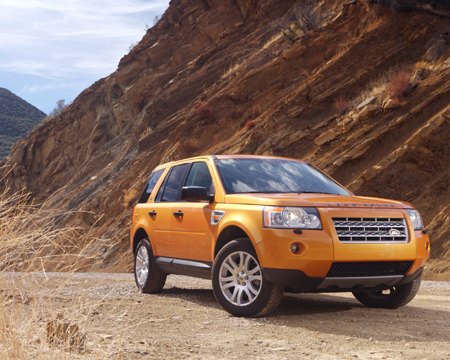



















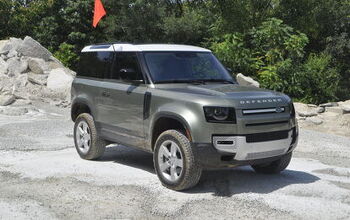
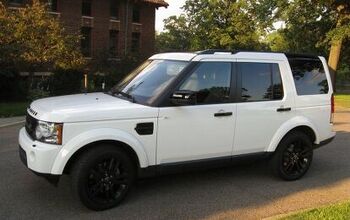
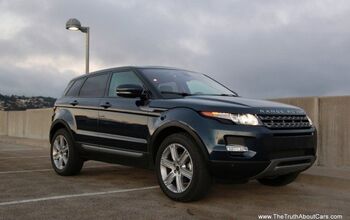
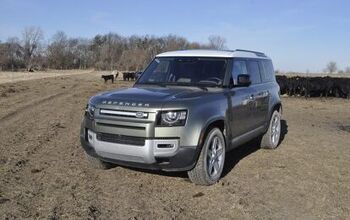











Comments
Join the conversation
"..but in this LR you have to put the dongle into a slot then press a button.." For you Toyota lovers, that's how you do it in the oh so practical Prius as well...
We have launched Land Rover Hell www.LandRoverHell.com as a result of the consistent problems that we have experienced with our Land Rover Discovery since its purchase, almost 3 years ago. Besides all the problems with the car, what has compounded matters is the bad service and general uninterested and unhelpful attitude of Land Rover Spain, and Land Rover head office in the U.K. The car has been unbelievably unreliable, and on 2 occasions whilst travelling abroad we experienced major problems, resulting on both occasions having to leave the car behind and return in a small hire car, thus leaving the trailer we had taken with us, stranded there too. Consequently this has involved another round-trip of having to collect the trailer, all at our own cost, which on both occasions the mileage has been 975km for each trip, so it wasn’t cheap! We also feel that it should be bought to everybody’s attention that Land Rover do not want to honour their warranty obligations, and fabricate lies to avoid paying out for genuine repairs, (please read the article "Battery & Transmission" for further details). We just feel that potential customers of Land Rover should be aware of the fact that the Land Rover Discovery is not a reliable car, and after the sale care is non existent and is particularly bad from Head Office. The supplying dealer was a nightmare, (no longer a main Land Rover dealer) However the current servicing dealer Autonautica in Benidorm has been fantastic and always very helpful, the roadside assistance have been terrific too, (invaluable on the Land Rover Discovery) but in the long run it is Head Office that hold the key to providing the long-term solution, and thus it is with them we have the problem. Hopefully, this forum will enlighten customers about our bad experiences, and also let other Land Rover Discover owners list there problems and grievances, so that prospective purchases of Land Rover products can see what they could be letting themselves in for, and subsequently that Land Rover realise the discontent of its customers and thus improve the reliability of the cars they manufacture and the after-car they provide for their customers, without whom, they would be out of business. We feel that the product is fantastic in theory, but the practicalities of owning the car make the purchase of a Land Rover Discover a really bad and costly mistake, please feel free to comment on current articles, and add your own. We have an extensive Search Engine Optimisation and marketing campaigns and plan to make this website the major forum for all Land Rover models, we look forward to your help in achieving this.